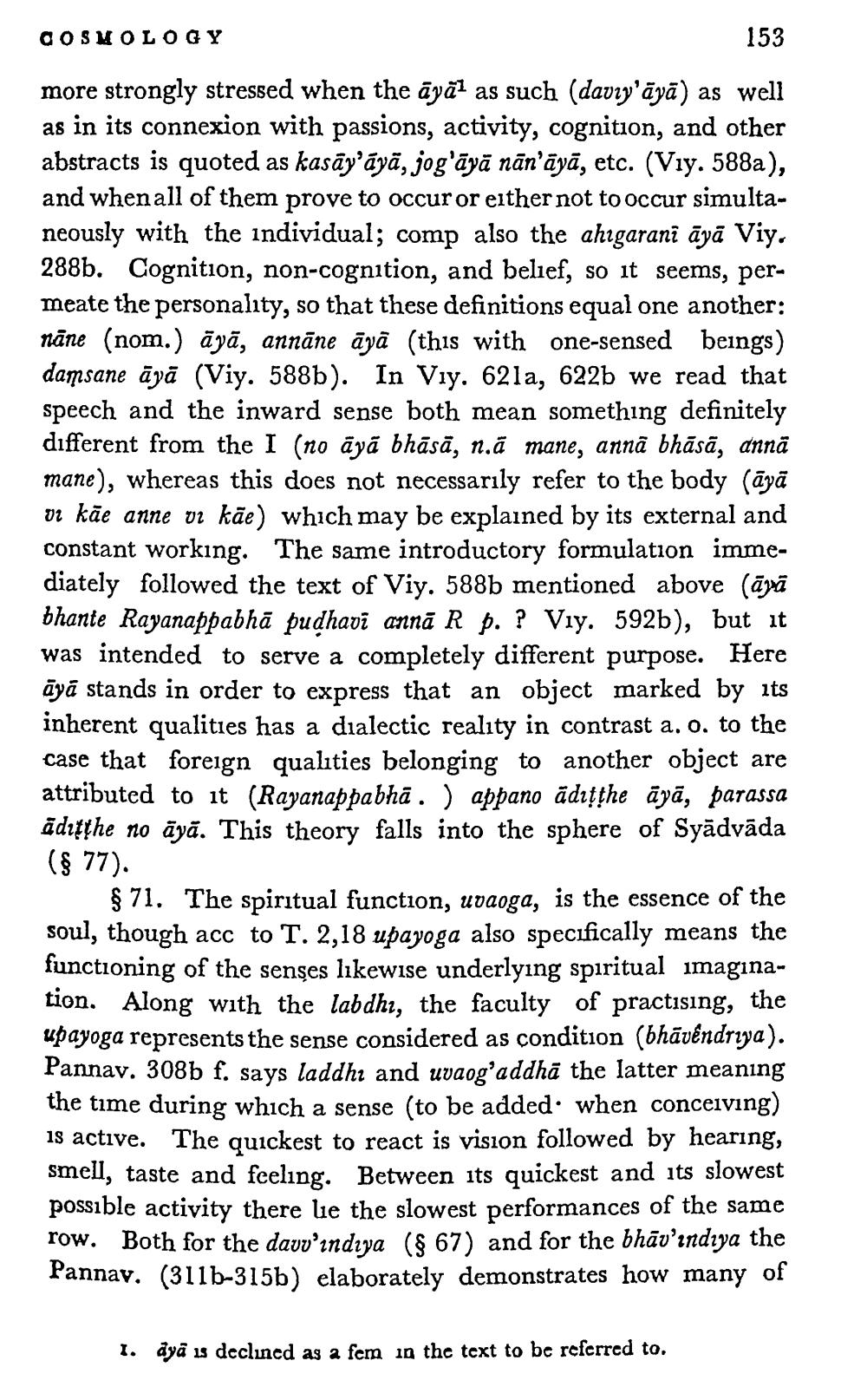________________
153
more strongly stressed when the āyā1 as such (davy'āyā) as well as in its connexion with passions, activity, cognition, and other abstracts is quoted as kasāyāyā, jog'āyā nān'āyā, etc. (Viy. 588a), and when all of them prove to occur or either not to occur simultaneously with the individual; comp also the ahugarani āyā Viy. 288b. Cognition, non-cognition, and belief, so it seems, permeate the personality, so that these definitions equal one another: nāne (nom.) āyā, annāne āyā (this with one-sensed beings) damsane āyā (Viy. 588b). In Vıy. 621a, 622b we read that speech and the inward sense both mean something definitely different from the I (no aya bhāsā, n.ā mane, annā bhāsā, annā mane), whereas this does not necessarily refer to the body (āyā vi kãe anne vi kāe) which may be explained by its external and constant working. The same introductory formulation immediately followed the text of Viy. 588b mentioned above (āyā bhante Rayanappabhā puḍhavī annā R p. ? Viу. 592b), but it was intended to serve a completely different purpose. Here āyā stands in order to express that an object marked by its inherent qualities has a dialectic reality in contrast a. o. to the case that foreign qualities belonging to another object are attributed to it (Rayanappabhā.) appano ādiṭṭhe āyā, parassa ādiṭṭhe no āyā. This theory falls into the sphere of Syādvāda (§ 77).
COSMOLOGY
§71. The spiritual function, uvaoga, is the essence of the soul, though acc to T. 2,18 upayoga also specifically means the functioning of the senses likewise underlying spiritual imagination. Along with the labdhi, the faculty of practising, the upayoga represents the sense considered as condition (bhāvendriya). Pannav. 308b f. says laddhı and uvaog’addhā the latter meaning the time during which a sense (to be added when conceiving) is active. The quickest to react is vision followed by hearing, smell, taste and feeling. Between its quickest and its slowest possible activity there lie the slowest performances of the same row. Both for the davv'indiya (§ 67) and for the bhāv'indiya the Pannav. (311b-315b) elaborately demonstrates how many of
1. aya is declined as a fem in the text to be referred to.




